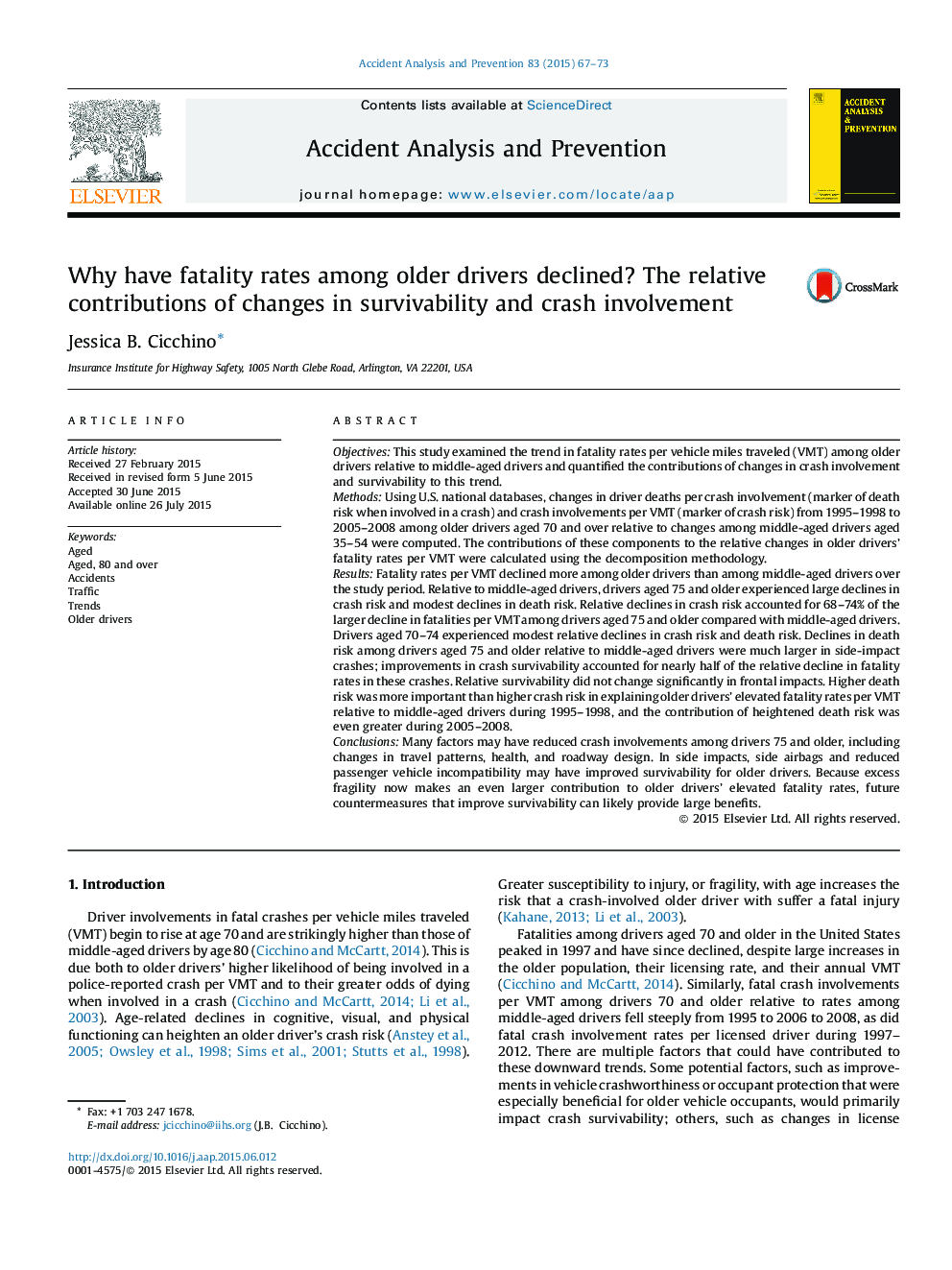| Article ID | Journal | Published Year | Pages | File Type |
|---|---|---|---|---|
| 572100 | Accident Analysis & Prevention | 2015 | 7 Pages |
•We examined trends in driver fatality rates, crash risk, and death risk (deaths per crash) among drivers 70+ and 35–54 during 1995–1998 and 2005–2008.•Driver fatality rates declined more for older than middle-aged drivers.•Relative to drivers 35–54, crash risk declined more than death risk for drivers 75+.•For drivers 75+ in side impacts, relative declines in crash risk and death risk were similar.•Fragility contributes more than elevated crash risk to higher fatality rates for drivers 70+ relative to drivers 35–54.
ObjectivesThis study examined the trend in fatality rates per vehicle miles traveled (VMT) among older drivers relative to middle-aged drivers and quantified the contributions of changes in crash involvement and survivability to this trend.MethodsUsing U.S. national databases, changes in driver deaths per crash involvement (marker of death risk when involved in a crash) and crash involvements per VMT (marker of crash risk) from 1995–1998 to 2005–2008 among older drivers aged 70 and over relative to changes among middle-aged drivers aged 35–54 were computed. The contributions of these components to the relative changes in older drivers’ fatality rates per VMT were calculated using the decomposition methodology.ResultsFatality rates per VMT declined more among older drivers than among middle-aged drivers over the study period. Relative to middle-aged drivers, drivers aged 75 and older experienced large declines in crash risk and modest declines in death risk. Relative declines in crash risk accounted for 68–74% of the larger decline in fatalities per VMT among drivers aged 75 and older compared with middle-aged drivers. Drivers aged 70–74 experienced modest relative declines in crash risk and death risk. Declines in death risk among drivers aged 75 and older relative to middle-aged drivers were much larger in side-impact crashes; improvements in crash survivability accounted for nearly half of the relative decline in fatality rates in these crashes. Relative survivability did not change significantly in frontal impacts. Higher death risk was more important than higher crash risk in explaining older drivers’ elevated fatality rates per VMT relative to middle-aged drivers during 1995–1998, and the contribution of heightened death risk was even greater during 2005–2008.ConclusionsMany factors may have reduced crash involvements among drivers 75 and older, including changes in travel patterns, health, and roadway design. In side impacts, side airbags and reduced passenger vehicle incompatibility may have improved survivability for older drivers. Because excess fragility now makes an even larger contribution to older drivers’ elevated fatality rates, future countermeasures that improve survivability can likely provide large benefits.
